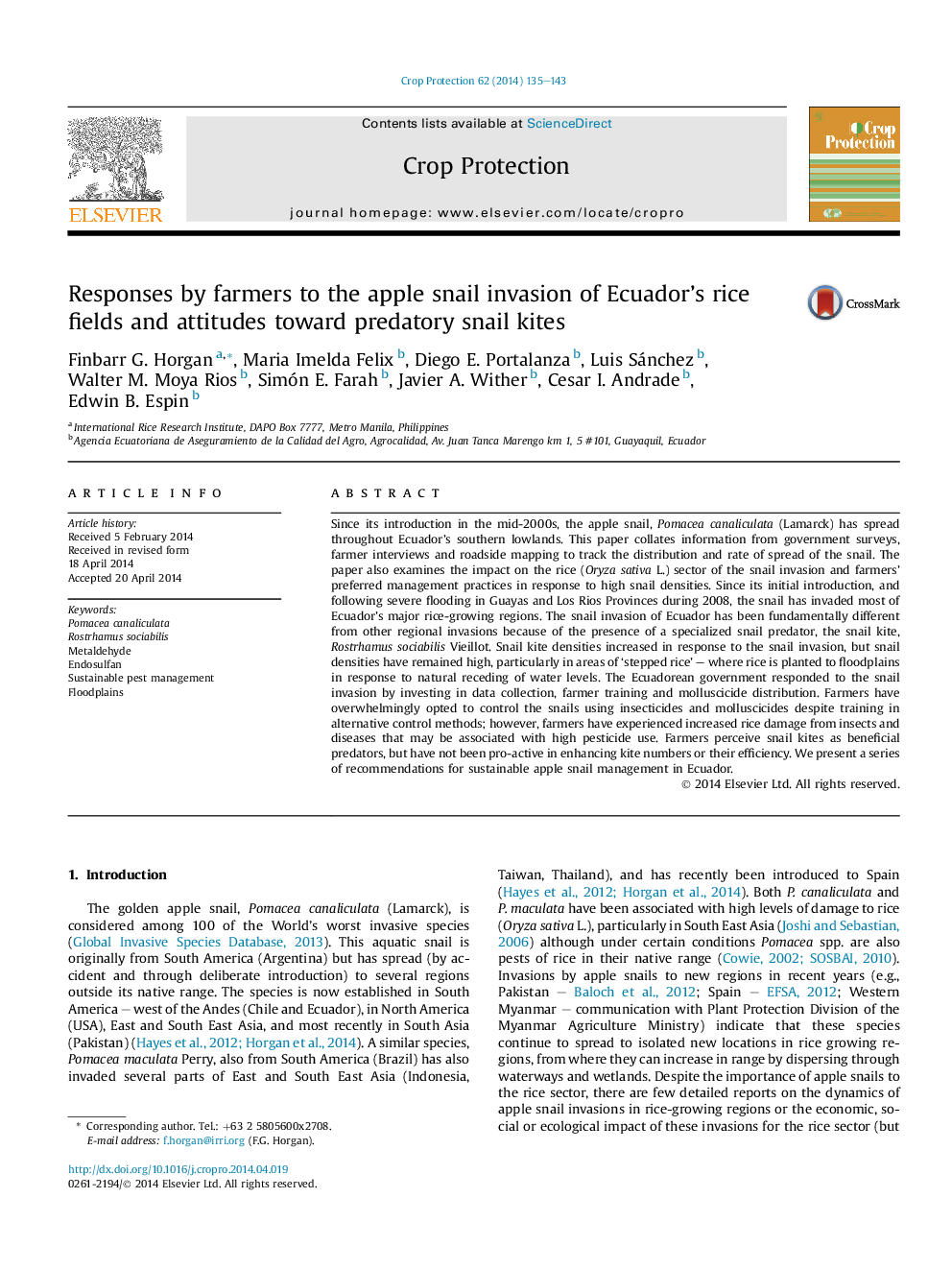| کد مقاله | کد نشریه | سال انتشار | مقاله انگلیسی | نسخه تمام متن |
|---|---|---|---|---|
| 4505895 | 1624325 | 2014 | 9 صفحه PDF | دانلود رایگان |
• Golden apple snail, Pomacea canaliculata, has recently invaded Ecuador's rice growing regions.
• The snail has spread through most of the rice growing area and causes moderate damage to rice crops.
• Snail kites are now abundant in Ecuadorean rice fields.
• Surveys revealed that farmers have overwhelmingly adopted chemical control of the snails.
• Better integration of management options with snail kite conservation is recommended.
Since its introduction in the mid-2000s, the apple snail, Pomacea canaliculata (Lamarck) has spread throughout Ecuador's southern lowlands. This paper collates information from government surveys, farmer interviews and roadside mapping to track the distribution and rate of spread of the snail. The paper also examines the impact on the rice (Oryza sativa L.) sector of the snail invasion and farmers' preferred management practices in response to high snail densities. Since its initial introduction, and following severe flooding in Guayas and Los Rios Provinces during 2008, the snail has invaded most of Ecuador's major rice-growing regions. The snail invasion of Ecuador has been fundamentally different from other regional invasions because of the presence of a specialized snail predator, the snail kite, Rostrhamus sociabilis Vieillot. Snail kite densities increased in response to the snail invasion, but snail densities have remained high, particularly in areas of ‘stepped rice’ – where rice is planted to floodplains in response to natural receding of water levels. The Ecuadorean government responded to the snail invasion by investing in data collection, farmer training and molluscicide distribution. Farmers have overwhelmingly opted to control the snails using insecticides and molluscicides despite training in alternative control methods; however, farmers have experienced increased rice damage from insects and diseases that may be associated with high pesticide use. Farmers perceive snail kites as beneficial predators, but have not been pro-active in enhancing kite numbers or their efficiency. We present a series of recommendations for sustainable apple snail management in Ecuador.
Journal: Crop Protection - Volume 62, August 2014, Pages 135–143
